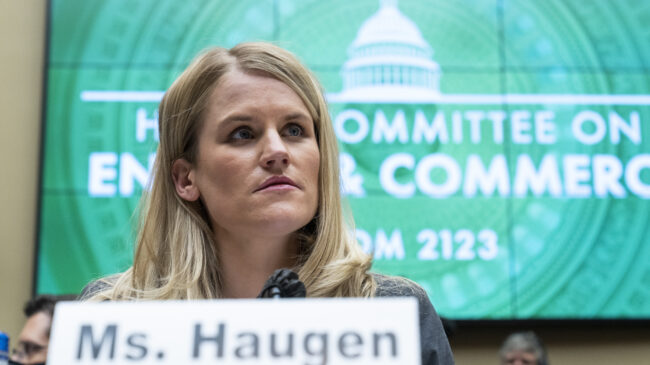On May 23, the California Assembly passed the “Social Media Platform Duty to Children Act.” This bill would codify the existence of “social media addiction” and says that social media companies are responsible for the harms of addiction. The law would enable parents to sue social media companies for up to $25,000 should their child become “addicted.”
California could soon hold social media companies responsible for harming children who have become addicted to their products, permitting parents to sue platforms like Instagram and TikTok for up to $25,000 per violation under a bill that passed the state Assembly on Monday.
The bill defines “addiction” as kids under 18 who are both harmed — either physically, mentally, emotionally, developmentally or materially — and who want to stop or reduce how much time they spend on social media but they can’t because they are preoccupied or obsessed with it.
Business groups have warned that if the bill passes, social media companies would most likely cease operations for children in California rather than face the legal risk.
The proposal would only apply to social media companies that had at least $100 million in gross revenue in the past year, appearing to take aim at social media giants like Facebook and others that dominate the marketplace…
Monday’s vote is a key — but not final — step for the legislation. The bill now heads to the state Senate, where it will undergo weeks of hearings and negotiations among lawmakers and advocates. But Monday’s vote keeps the bill alive this year.
An analysis of the California bill, leaked documents, and media reporting suggests that the information on which the bill tries to establish these harms is far from settled science or data. The proposed law, Assembly Bill 2408, does little to establish why social media use in adolescents should be viewed as an addiction that must be prevented or cured rather than a cultural shift caused by technological development.
The bill is based partially on findings from an investigation by The Wall Street Journal. Done in collaboration with Facebook “whistleblower” Frances Haugen, who was a product manager at Facebook, The Wall Street Journal’s “Facebook Files” series focused on analyzing internal documents from Facebook.
One finding from The Wall Street Journal’s investigation included claims that Facebook’s management had evidence that the company’s photo-sharing social media platform Instagram harms the mental health of teenagers who utilize the social networking service. This report also suggested Facebook was aware of and studied this “problematic use.” Facebook’s understanding of the “problematic use” of its software is that such use represents “unhealthy” or “excessive” engagement with social media.
To California’s state Assembly, the leaked Facebook documents and WSJ report represented undeniable evidence that adolescent social media use can be excessive and medically harmful. The bill declares that the revelation from the Facebook Files proves that:
The largest social media platform company in the world’s own secret internal research validates both the existence of social media addiction in children and that social media addiction hurts children. As an example, in September 2021, The Wall Street Journal published a series of articles referred to as “The Facebook Files.” Those articles, citing a trove of internal documents obtained from Frances Haugen, a whistleblower, demonstrated the extent to which Facebook knew that its platforms cause significant harm to users, especially children…
A March 2020 presentation posted by Facebook researchers to Facebook’s internal message board reported that ‘[a]spects of Instagram exacerbate each other to create a perfect storm.’
But, analyzing The Wall Street Journal’s report suggests that some of the claims state legislators are relying on may not be a completely accurate depiction of social media’s impact on teens. The WSJ claims that “In one study of teens in the U.S. and U.K., Facebook found that more than 40% of Instagram users who reported feeling ‘unattractive’ said the feeling began on the app.” Yet, the real statistic in internal Facebook documents appears to be 33%).
This numerical defect alone doesn’t debunk the reporting but was not the only error within the Facebook Files. The WSJ largely failed to note that body image was, out of 12 other negative health impacts examined, the only one that teenagers said Instagram did not have a neutral or positive impact on. Other categories, such as loneliness and anxiety, had fewer than 13% and 12% of respondents, respectively, report feeling that Instagram worsened those feelings.
The California bill also prematurely declares that “scientists, doctors, and other researchers, acknowledge the existence of social media addiction,” even though the medical community is far from unanimous agreement. A frequently-cited study from a group of researchers based in China, Hong Kong, and America, hypothesizes the existence of social media addiction and links this phenomenon to increased depressive symptoms and decreased school performance.
However, a different study from researchers at the University of Strathclyde in Scotland actually determined that social media use has few characteristics in common with medical addictions–implying that social media use cannot be an addictive behavior. Another study, by researchers at the University of Michigan and Middle Tennessee State University suggests that social media addiction if it exists, may be brought about by stress or other life issues, which would imply that social media addiction is not itself an addiction but rather a symptom of a larger sense of dissatisfaction.
While experts believe in social media addiction, the California Assembly is wrong that the issue is settled within the scientific community. The studies above show that researchers continue to disagree about social media addiction– whether it exists at all, or whether it could be merely a symptom of another problem entirely.
Likewise, the idea that a younger generation’s embrace of new, popular technology is a sign of medical deficit is not new. There have been many technological advances throughout history that society has initially decided could be “addictive” at one point or another. For example, when the printing press made reading accessible to the public, some individuals, the most prominent being famous British writer Vicesimus Knox, began to identify and condemn “reading mania” in the late 1700s. This addiction was first identified by parents who were concerned that their children were reading excessively and wanted publishers and authors to answer for the “outbreak” that they supposedly caused. Edward Mangin’s An Essay on Light Reading from 1808 directly refers to voracious novel reading as a “deadly infection” that can cause mental and physical ailments, further supporting the parallel between attitudes towards reading in the past and attitudes about social media use today.
When telephones became popular, some outlets condemned the younger generation’s embrace of the tool. Like social media addiction today, “telephone addiction” also had a formal definition and criteria that included being unable to be away from a phone for more than three hours without suffering “anxiety tremors.” Discussing this idea at length, author Louis Anslow highlighted an article written by columnist Ellen Goodman at The Boston Globe in 1984. Goodman claimed that “[T]he telephone purveyors bear a grave responsibility for the rapid growth of [telephone] addiction in the United States.” A point that seems to echo California’s current sentiment toward social media companies.
New, innovative technologies almost always go through a period of rapid use from younger generations who are most likely to adopt them early. History has shown that as this initial excitement dies down, using these technologies becomes part of daily life, not a disease or addiction. For example, the concept of an individual being addicted to talking on the phone has lost serious credence in the scientific world and is typically no longer used in any context. Today, many individuals prefer to not talk on the phone at all, opting for text-based options, or even rejecting notifications in order to screen callers.
California’s proposed “Social Media Platform Duty to Children Act” relies upon a selective use of data that stirs up a false sense of panic about a promising new technology that is similar to previous panics. When compared to other relevant innovations like mass-printed books and telephones, social media displays many similarities including critics who claim that it is an addiction ruining society and that purveyors are responsible for these “illnesses.”
The California bill would punish social media companies for innovating and create barriers that could keep new generations from benefiting from the many positive impacts these platforms have to offer.
Parents are certainly right to monitor and be involved in how their children use social media. But before California lawmakers pass sweeping laws, they should at minimum, collect and study more data.

